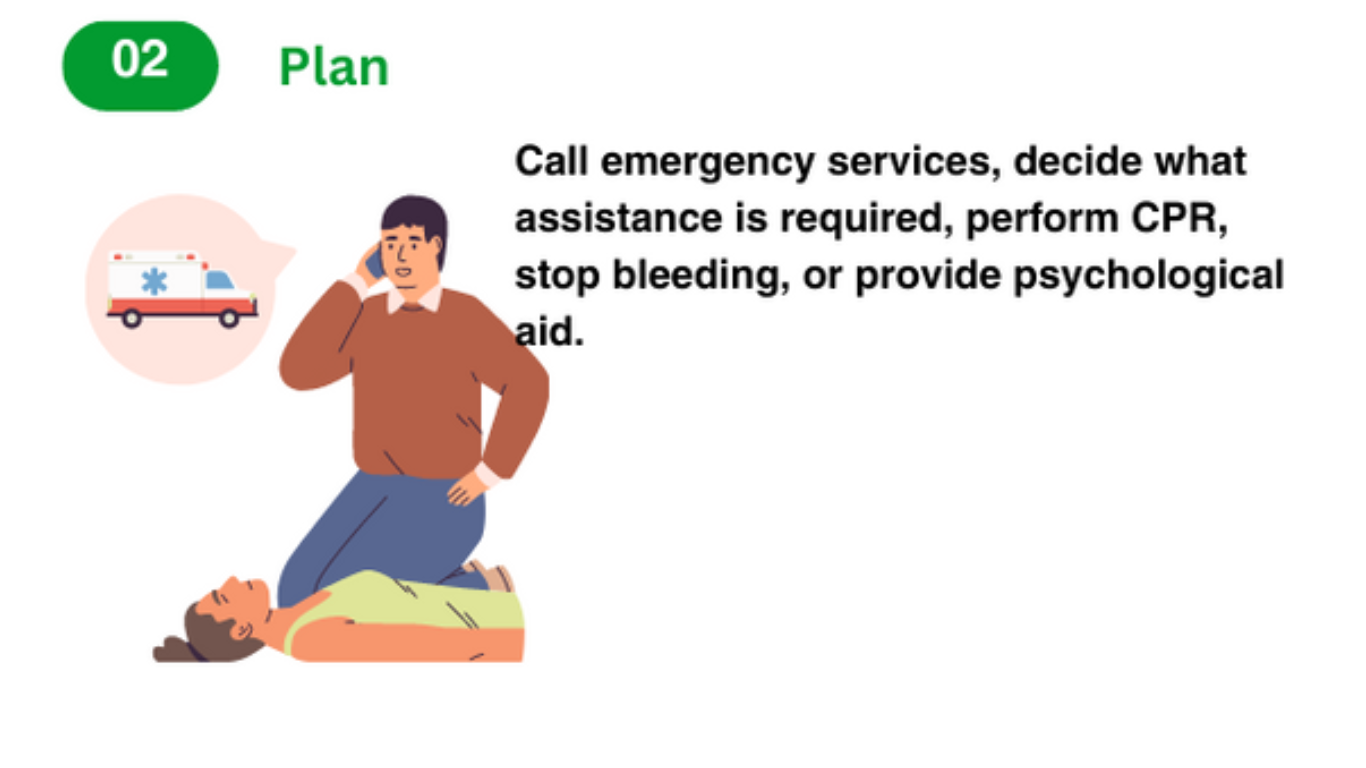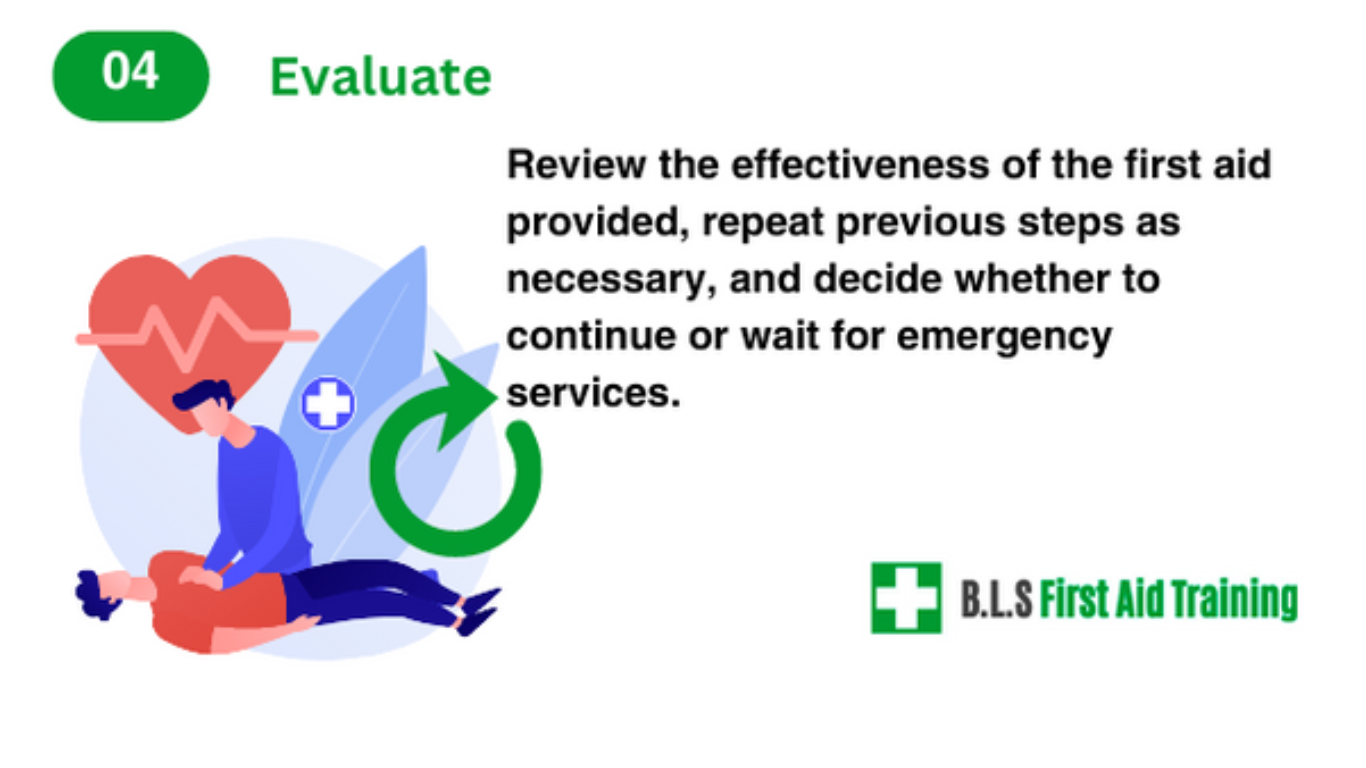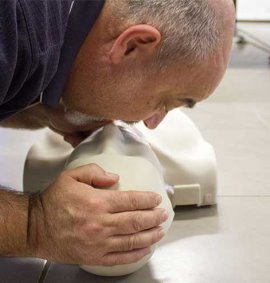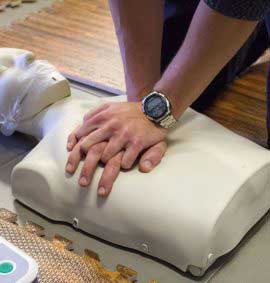4 Essential Steps of First Aid: Assess, Plan, Implement, Evaluate
Proper first aid can save live; but studies show that most Australians don’t know how to perform it correctly. According to the Coach Nine, fewer than 5% of the population are confident in an emergency situation. Don’t be discouraged by this low percentage; first aid training is as easy as it is important! There are only a few steps that you need to follow.
Though there are several versions of the first aid procedures, including the DRSABCD (7 steps), this article will outline the 4 first aid steps for emergencies.
The 4 Steps of First Aid

If you want to know how to provide First Aid, you’ll need to understand the four steps that apply to every single emergency:
- Assess
- Plan
- Implement
- Evaluate
Knowing these first aid steps is important, and could save the life of a friend, family member or stranger!
First Aid Step 1: Assess

Before doing anything else, it is vital to assess the situation appropriately and accurately. Here’s what you’ll need to do:
- Make sure that safety procedures are followed before trying to help anyone
- If the situation appears to be dangerous for you or bystanders, stay back and wait for an emergency team to arrive
- If it is safe to approach the person, assess their condition: Are they conscious? Is the person breathing? Are they bleeding?
It’s important to get a good grasp of the range of injuries before moving on to the next step.
First Aid Step 2: Plan
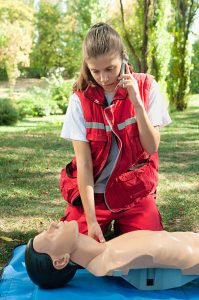
Step 1 will help you determine what course of action is the most suitable, allowing for Step 2: Plan.
First, call for an emergency team on Triple Zero (000), if this hasn’t been done already. Next, determine what you can do to help until paramedics arrive. Is the person unconscious and not breathing – will you have to perform CPR? Does the person have an injury that is bleeding intensely – will you need to stop this with pressure? Is the person choking?
First Aid Step 3: Implement
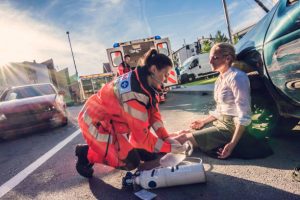
Once you’ve assessed the situation and you have a plan, it’s time to implement it in Step 3.
In many instances, when the person is conscious, psychological first aid will be enough until emergency assistance arrives. You’ll need to talk to the person, gather important information and soothe them as much as you can.

Some situations, however, could necessitate more serious assistance. When the person is not breathing, you’ll have to administer CPR. Cardiopulmonary Resuscitation (CPR) is an emergency lifesaving procedure that can restore breathing through chest compressions and, in some instances, artificial ventilation (mouth-to-mouth breathing). CPR can double and sometimes even triple survival rates!
Being properly trained in first aid procedures will help you decide exactly what to do, the circumstances in which you will need to take action, and how involved you should get.
Whilst implementing your emergency assistance plan, continue to check for your safety and that of bystanders. Emergencies can change quickly and unexpectedly!
First Aid Step 4: Evaluate

Last, you’ll need to evaluate the effectiveness of the first aid actions that have been undertaken. You might need to repeat the actions taken within the previous steps. Based on your evaluation, you’ll get to decide what to do next; continue to repeat Steps 1-3 or wait until emergency services arrive.
A Few Additional Tips
Staying calm and collected in an emergency isn’t easy, especially if you lack professional knowledge and experience. Still, it is important to try and maintain your composure. Focusing on the sequence of first aid steps will simplify the process, allowing you to concentrate and offer sufficient and appropriate help.
One final thing to remember is that you should always prioritise your own safety, no matter how dire the situation is. If you believe there’s any risk involved, stay back. It’s much better for an emergency team to handle one situation than to address the original emergency and the injuries that would-be rescuers have also sustained.
While we hope this article has allowed you to understand the 4 key First Aid steps in an emergency, receiving First Aid training is important! If you wish to receive accredited First Aid training, please see the classes we offer both in our training facility and onsite.
ACCREDITED FIRST AID COURSES IN BRISBANE
2.5H accredited CPR training course – No online learning – $60
Accredited first aid training course – Includes HLTAID009 Provide CPR & Online learning – $125
Accredited first aid training course – Includes HLTAID009 Provide CPR & Online learning – $125


